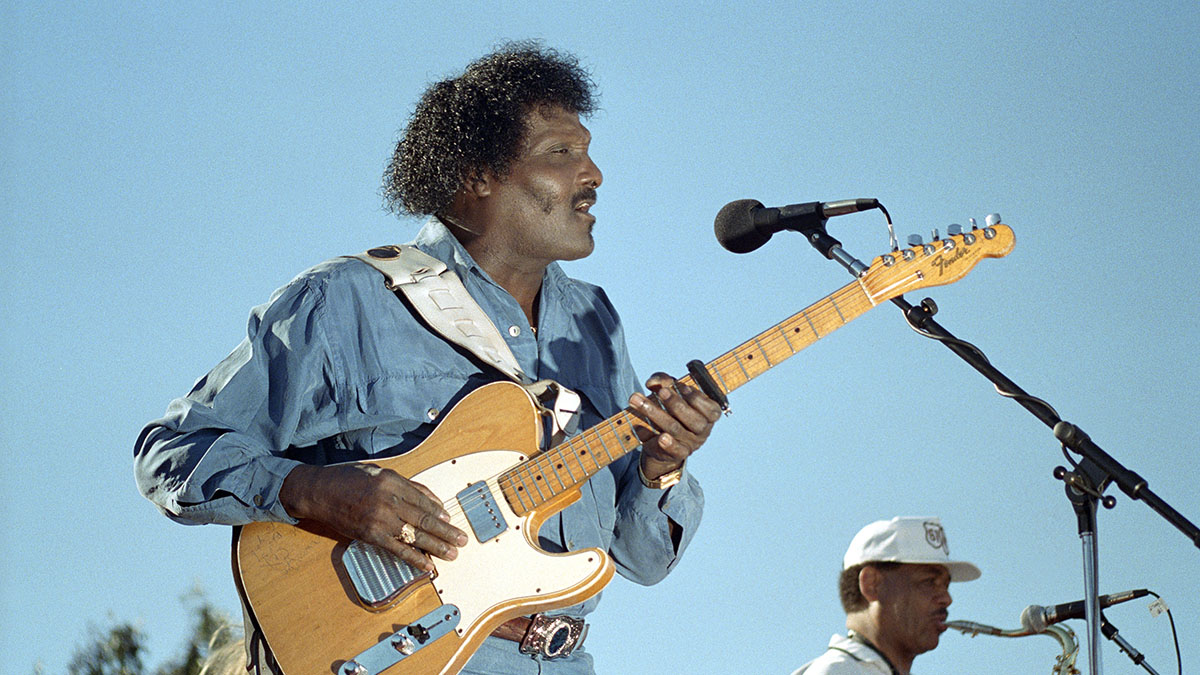
Known as the Master of the Telecaster, Texas-born Albert Collins had a very distinctive sound and a unique approach to blues guitar. His ferocious attack, his unique guitar setup, and his tone, which was responsible for his other nickname, The Iceman, allowed him to carve out a sound that is instantly recognisable.
Born in Texas in 1932, Albert first dabbled with the Hammond B3 organ before switching to guitar, partly inspired by his cousin Lightnin’ Hopkins, another blues legend, along with artists such as John Lee Hooker, Guitar Slim, and T-Bone Walker.
Unconventionally, Albert learned early on to tune his guitar to F minor (F-C-F-Ab-C-F), which gave him access to sounds that were different from those of his peers, and was arguably one of the most important elements to his unique sound.
On top of this, he would almost always capo his guitar for the key of a given song, meaning he could utilise ‘open’ strings in a manner that would be similar to playing in E on a regularly tuned guitar.
This, while allowing Albert to always have access to his signature licks, also gave his guitar a particular tone, as, considering the capo was often high on the neck around the 5th, 7th, or 9th fret, for example, the strings had much less give, and would slap back against the fretboard to a greater extent than normal.
Coupling this with his use of the picking-hand thumb and first finger (he never used a pick) and a fairly aggressive attack gave his tone a particular ‘snap’ that was instantly recognisable.
His phrasing was lyrical, relying on space and a question-and-answer approach. This highly punctuated style helps create tension and excitement and really makes his licks stand out. Add his powerful, wild, stinging vibrato, and it makes for one thrilling listen.
As well as affecting the tone of the guitar, these unique devices gave Albert some of his signature moves. The F minor tuning led to him leaning heavily on the 6th degree of the scale, providing an interesting sound that somewhat combines elements of both the minor and major Pentatonic.
As mentioned, his capo method allowed him to utilise ‘open’ strings, and one lick you will often hear involves Albert playing an open sixth-string root note immediately followed by a slide into the octave higher. He would then shake the high note for all it was worth. This had an exciting quality and became a noticeable trademark of Collins.
We can recreate some of these ideas without the need for a capo or altered tunings by using a little adjustment to our approach, some string skipping, and a heavy attack. They are great ideas to take away, and I suggest you apply some of these concepts to your own improvisations.
Get the tone
Amp Settings: Gain 6, Bass 3, Middle 6, Treble 7, Reverb 5
Albert had a very distinctive tone that had plenty of bite and twang while remaining thick and powerful. I’d recommend using the bridge pickup, boosting the mids and treble, and keeping the bass fairly low. A generous amount of reverb will help too. Whether using a guitar pick or fingers, keep the attack quite heavy so that the strings ‘snap’ against the frets.
Study Piece 1
This piece leans heavily on the sound of the 6th degree of the scale, as Albert liked to do (and which Robben Ford and Matt Schofield admired so much). We also see his signature move of a quick octave jump in bar 6.
Aim for a wide vibrato and a heavy attack throughout to capture the energy of Albert’s playing. The slide in bar 14 can be tricky to get down accurately. I’d recommend fixing your eye on the target note (19th fret) before sliding up to it.
Study Piece 2
This piece illustrates Albert’s snappy, staccato style, which was funky and rhythmic. Be sure to keep the notes short where indicated and ensure you are capturing the tight feel of this solo. The vibrato is again important to get right, as is the imperative to make every note count!







